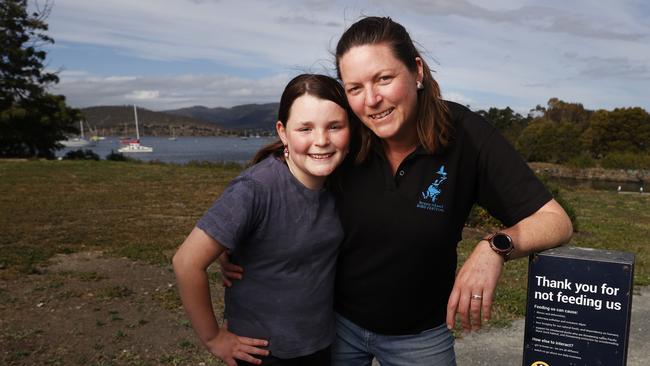Tasmanian conservation groups battling to save native Pacific black duck
A new species has silently been taking over Tasmanian waterways and conservationists say they’re a threat to native species. Why feeding the ducks might not be as harmless as you think.

Tasmania
Don't miss out on the headlines from Tasmania. Followed categories will be added to My News.
Conservation groups and local councils are asking the Tasmanian public to stop feeding ducks as they battle against the loss of a native species.
The Pacific black duck (PBD) is found across Australia and the Pacific region, but recent hybridisation by closely related species, introduced Mallard ducks, has damaged the species’ gene pool.
Lord Howe and Norfolk Island’s pure PBD populations are nearing extinction, with New Zealand’s population heading in a similar direction.

Recent removal efforts at New Town Rivulet by volunteers from Landcare Tasmania’s Pacific black duck conservation group in conjunction with Glenorchy Council show the true extent of the hybrid species’ spread in Tasmania, collecting 65 hybrid ducks in the area.
Group co-ordinator Jason Graham said the hybridisation of PBD ducks was a common problem that goes unnoticed.
“The interbreeding of the different species is subtle, but has a really big impact other than the loss of a pure native species,” he said.
“Not only are mallards incredibly destructive in our waterways in their foraging habits and from their waste, but they then pass these traits to our Pacific blacks, who adopt these traits and then go onto breed.”

Mallard ducks are one of the only domesticated ducks able to produce fertile offspring with PBDs.
Due to the frequent dumping of ducks around Tasmania, mallards have bred mass populations of hybrid PBD-Mallard cross ducks statewide.
“The Derwent River is currently the worst for populations of the hybrid species,” Mr Graham said.
“The amount of places where people feed these ducks is where we see the populations boom.”
Feeding ducks is one way the more domesticated mallard duck and PBDs make contact and can encourage breeding between the two.
New signage is being developed between the Pacific black duck Conservation Group and Tasmanian councils to discourage duck feeding at the state’s waterways, as well as soon releasing a native duck ID booklet encouraging birdwatching instead of bird feeding.
Tasmanian bird ecologist Dr Eric Woehler agreed the issue was of “national concern”.
“We are losing species while we are looking at them,” he said. “We are seeing the loss of genetic identity in BPD as more of the population becomes mixed genetically.”
Dr Woehler called on the state government to do more to contribute to the conservation of PBDs.
“We need an active management plan statewide to prevent the spread,” he said.
More Coverage
Originally published as Tasmanian conservation groups battling to save native Pacific black duck




